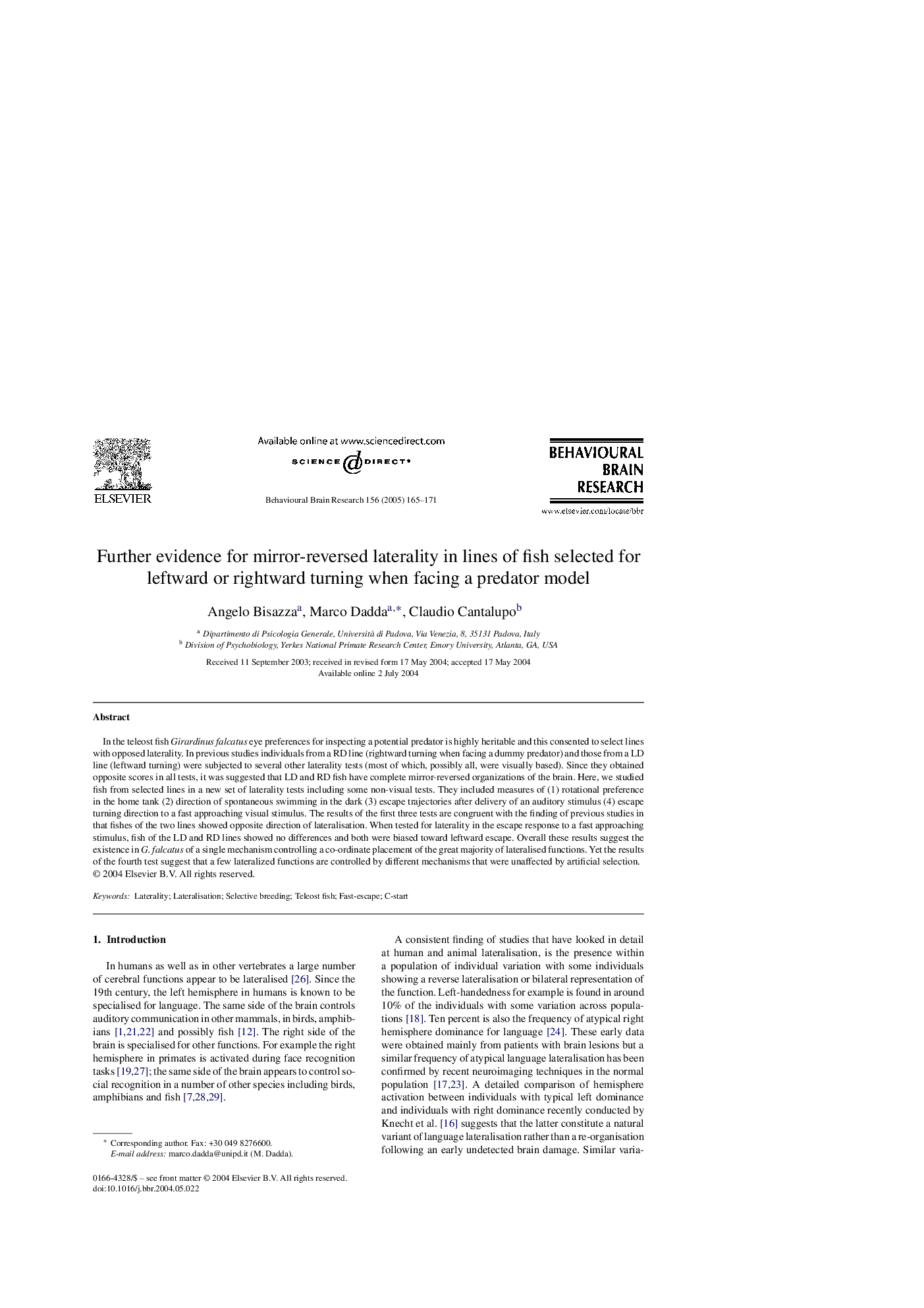| Article ID | Journal | Published Year | Pages | File Type |
|---|---|---|---|---|
| 9406617 | Behavioural Brain Research | 2005 | 7 Pages |
Abstract
In the teleost fish Girardinus falcatus eye preferences for inspecting a potential predator is highly heritable and this consented to select lines with opposed laterality. In previous studies individuals from a RD line (rightward turning when facing a dummy predator) and those from a LD line (leftward turning) were subjected to several other laterality tests (most of which, possibly all, were visually based). Since they obtained opposite scores in all tests, it was suggested that LD and RD fish have complete mirror-reversed organizations of the brain. Here, we studied fish from selected lines in a new set of laterality tests including some non-visual tests. They included measures of (1) rotational preference in the home tank (2) direction of spontaneous swimming in the dark (3) escape trajectories after delivery of an auditory stimulus (4) escape turning direction to a fast approaching visual stimulus. The results of the first three tests are congruent with the finding of previous studies in that fishes of the two lines showed opposite direction of lateralisation. When tested for laterality in the escape response to a fast approaching stimulus, fish of the LD and RD lines showed no differences and both were biased toward leftward escape. Overall these results suggest the existence in G. falcatus of a single mechanism controlling a co-ordinate placement of the great majority of lateralised functions. Yet the results of the fourth test suggest that a few lateralized functions are controlled by different mechanisms that were unaffected by artificial selection.
Related Topics
Life Sciences
Neuroscience
Behavioral Neuroscience
Authors
Angelo Bisazza, Marco Dadda, Claudio Cantalupo,
